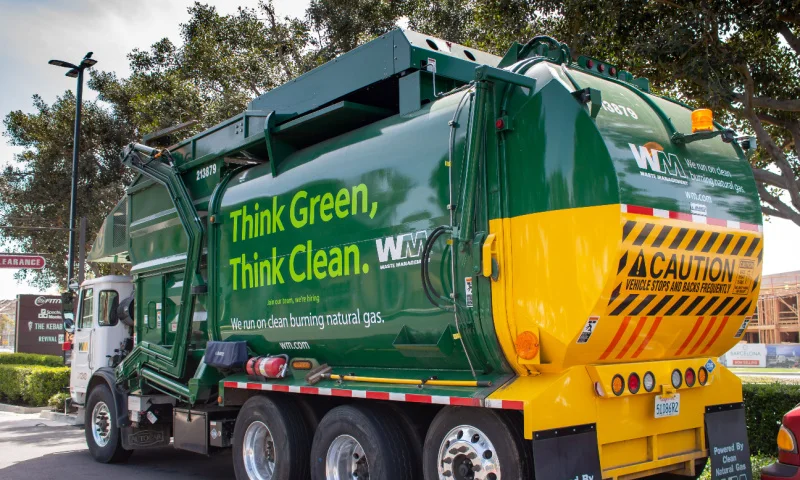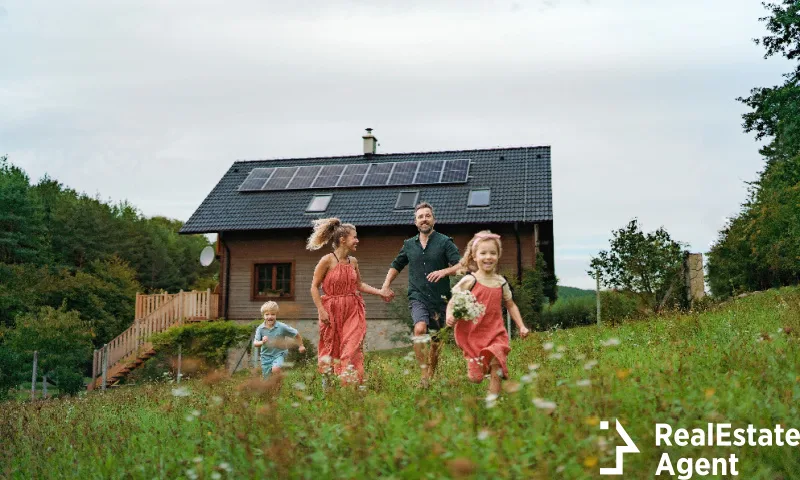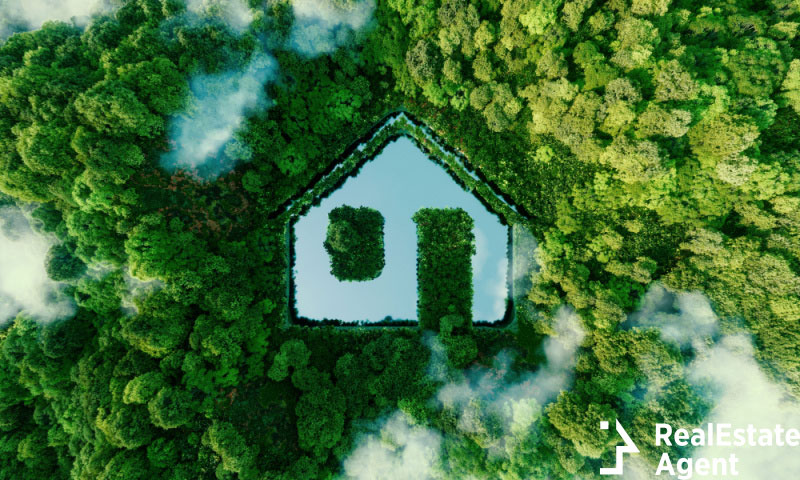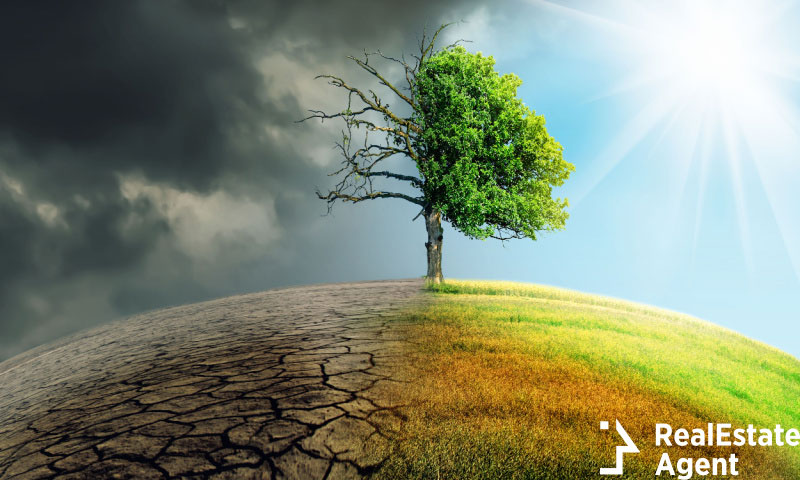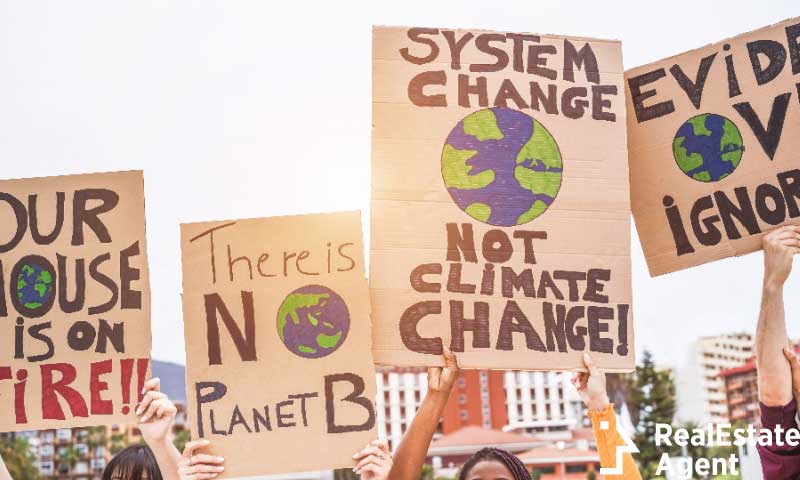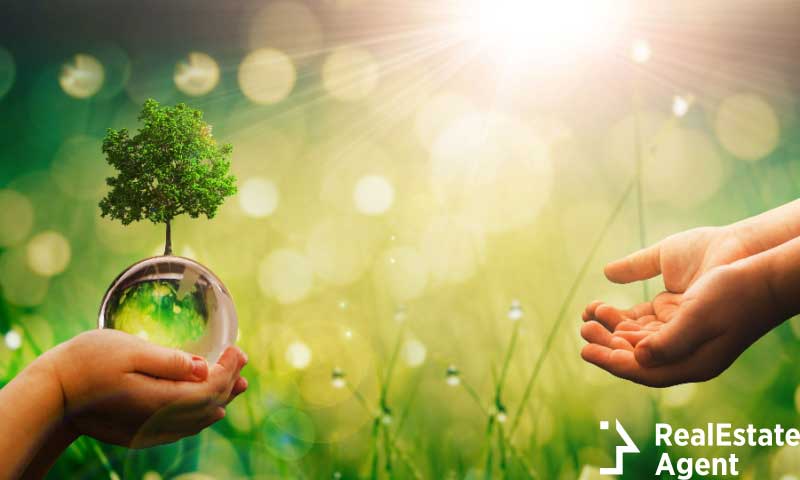As an environmentally conscious individual, I’m starting to find small little things that irk me to some level in the people around me. It might be something as small as tossing the Mcdonald’s wrappers on the ground or throwing things out of a moving car, but I can’t help but wonder why they feel like that is the best way to go. There are plenty of trash cans everywhere ready for their garbage or themselves to be thrown in them.
I just can’t understand how people can be so disgusting, selfish, and disrespectful. When it comes to people I don’t know I don’t stop myself from pointing out their lack of manners, but those close to me get a different response. While I try to restrain myself from forcing my principles down someone else’s throat, when it comes to the environment I find myself trying to guide them down a more sustainable path. Whether it’s telling them to pick up the wrapper they just threw on the ground or making them aware of the sustainable alternatives available to them, I try to act even if I am aware that changing individual mentality won’t have the impact that I want.
It’s about time we look to those truly responsible and dump their garbage in their backyard. I’m curious what would the CEOs of big oil companies say if overnight their expensive manors would be under a mountain of fossil fuels, coal, or gas. I know that gas and fuels don’t make mountains, but you get the picture.
When you look at your life what do you see?
If possessions, money, large properties, rooms filled with clothes, and the most pretentious car you can think of are the goals you aim for, then this article might be a bit tough to read. I’m not saying you shouldn’t read it, quite the contrary, because when it comes to sustainability, an opulent lifestyle is not the thing you should be aiming for. The idea is to lower our carbon footprint but not as individuals. Lowering our carbon footprint needs to be a global aim.
Your lifestyle has a much bigger negative impact than that of a person in Indonesia, Bangladesh, India, or Sudan, but they are the ones that will feel the impact first. You will as well when you’ll see all the climate immigrants coming to the US, but just like before, you’ll lock them in cages and forbid them access to your lifestyle even if they don’t want anything to do with your lifestyle or opulence. All they want is to live on a planet that is drowned in the side effects of your opulence.
Throughout this article, we aim to tackle a few important factors related to sustainability, but also what we can do to promote a more sustainable lifestyle. What we own ends up owning us as we find possessions more valuable than experiences. Freedom from possessions will decrease the pressure placed on the environment from sustaining our modern lifestyle.
Article Summary:
- Sustainability – The 21st Century’s Buzzword
- Sustainability Pillars
- Sustainability in the Modern World
- Environmental Awareness
But don’t forget, while we all have our own carbon baggage to carry, big companies have an astronomical burden to carry. Massive changes need to happen which is why promoting an environmentally conscious lifestyle is so important. We all know how unwilling people are to implement something that is different, so making them aware of their benefits is very important. You need to make this about them because as human beings our empathy is rather limited, sometimes stopping at our family. There is a way to do this, so let’s see how.
Sustainability – The 21st Century’s Buzzword
The concept of sustainability can be traced as far back as 1713, in Germany, when Hans Carl von Carlowitz wrote in his work, Sylvicultura Oeconomica, about the responsible use of natural resources in forestry. Still, calling him the Father of Sustainability doesn’t seem correct considering the efforts ancient cultures made to restrict the use of natural resources within their communities. For the start of sustainability as a concept, we should look to the Māori of New Zealand, as well as other communities in the coastal British Columbia, Oceania, Indonesia, Mali, and India.
Defining Sustainability
For the sustainability definition, however, we can look at the word’s etymology – Latin – and its meaning – to sustain. The modern use of sustainability is ample and can be applied to many fields, but the UN Commission on Environment and Development from 1983, also known as the Brundtland Commission, gave us the easiest to understand explanation of sustainable development: development that “meets the needs of the present without compromising the ability of future generations to meet their own needs.” From these two explanations, we can conclude that the sustainability definition refers to practices that can be sustained or maintained for a long time without causing harm to the environment.
Why is Sustainability Important?
The past couple of years showed us that collective action is necessary to fight a global threat. The coronavirus pandemic brought to light our need to work together regardless of borders, skin color, religious background, or identity. However, it also showed us how stuck we are in the mentality of division. We look at our differences and make decisions based on them forgetting that we are, in fact, all human beings. We all suffer, we all get sick and we are all under threat.
While the pandemic gave us an opportunity to come together, we failed because we allowed divisions to pick us apart. Still, when it comes to the climate crisis, we do not have the luxury to think of division anymore.
The climate crisis, similar to the pandemic, doesn’t care whether you live in the US, Pakistan, Russia, Colombia, or Spain. However, while the pandemic affected individuals, the climate crisis will affect communities. We can already see the impact of climate change in various parts of the globe. From California fires to glaciers melting, intensifying hurricanes, droughts, colder winters, and hotter summers, all these are ways through which the planet is showing us that it can’t take much more.
We can see organizations rebelling against climate change, protesting, academics and scientists taking it to the streets or in front of big oil investing companies like Chase Bank. They do this because while governments and companies say they will act responsively towards the environment, they do a 180° turn when action is required. Companies and governments can implement, demand, or impose the biggest amount of change. Still, that is the wheel that moves the hardest. We can all implement a more sustainable lifestyle, but sustainability should be a priority for governments and businesses especially.
Sustainability Pillars
Sustainability on its own is a concept that underlines intergenerational equity and it has three pillars: the environment, the economy, and the society. A sustainability definition is a concept of being maintained at a certain level or rate for a long time without harm to the environment, or avoiding the depletion of natural resources so that an ecological balance is maintained for future generations.
However, the three pillars work to explain how sustainability should be applied and what needs to be taken into consideration when it is applied. The Brundtland report of 1987 underlined that environment and development should be seen as a unit, while the 1992 Agenda 21 separated the three dimensions – environment, economic and social stating that “countries could … [achieve] sustainable development by adopting indicators that measure changes across economic, social and environmental dimensions.”
Environmental Sustainability
The 1960s and 1970s came with increasing environmental pollution and the awareness of pollution. The basis for sustainable development was provided and the process began. Throughout most of human history, pollution was seen as a local or regional concern but that changed in the 20th century. We finally understood the global aspect of the environment as the effects became known. We grew aware that the Earth’s ozone layer is sensitive to chlorofluorocarbons (CFCs) and decided to ban them collectively.
Environmental sustainability is concerned with the environment’s well-being. In order to respect this sustainability pillar you have to keep in mind air quality, soil quality, and water quality as well as limit environmental stressors as much as possible. Our health is directly impacted by the environment we live in. As cases of health problems related to air pollution in cities, sun exposure, lack of clean water, and crops affected by soil pollution grew, we became more concerned with how we’re impacting the global environment.
However, the economy relies on the resources provided by the planet and society depends on a functional economy. Still, economic development should not come at the expense of the environment. While using the planet’s resources is necessary, we are responsible for the resources that we use, how we use them and how much of them we use. For instance, if we extract fossil fuels through polluting means, create polluting products from them and use it on polluting cars, electricity, and materials that harm the environment, that’s not sustainable. If we cut down entire forests for fire without replanting at least as much as we take, even if we don’t burn it but use it for buildings and furniture, that’s not sustainable. If we grow cotton with the abundance of water it needs, then dye it with chemicals that then seep into the planetary ocean, that’s not sustainable.
When using natural resources we should always take into consideration the impact it has on the global environment and what steps can we take to ensure the planet still has plenty of resources. We also need to take into account the artificial materials and means used throughout the manufacturing and transportation process. The reason is social and takes into account the fact that other generations should have access to those resources as well, or, in other words, intergenerational equity.
Economical Sustainability
Moving from environmental sustainability to economical sustainability is organic because one depends on the other. See why these pillars are the cornerstone of the concept of sustainability? When we look at economic sustainability we need to see jobs being created, profit resulting from the economy, and accountability to the environment. Only then can we say that the cost of running the business is balanced with the benefits of that business. A job market with high employment rates is beneficial for both the economy and the people by giving both resources security. Like this, the reasons for which companies need employees and people need jobs create social sustainability. The one provides for the other and vice-versa.
If you look at how the modern-day economy works you can easily see a lot of cracks in the design. While the gig economy ensures that companies get their profits in order to grow, it doesn’t ensure resource security for the population. People need to work two or three jobs to make ends meet and they struggle. At the same time, while people pay taxes, companies can find loopholes to avoid them, and while companies can benefit from those taxes through infrastructure, the people don’t get health care or paid education.
When it comes to environmental sustainability, the economy doesn’t give back even the amount that it takes in resources. Furthermore, it pollutes rivers, air, and soil which harms the environment further. By implementing more responsible uses of resources, like switching to natural resources that have a lower carbon footprint instead of oil, coal, and gas, the economy would be more flexible as it won’t depend on one natural resource. Simply replacing clothing materials with more sustainable alternatives like hemp, organic cotton, or linen will dramatically change the impact fast fashion has on the environment. By switching to renewable energy we can stop depending on the planet’s most toxic resource. However, when it comes to the energy transition, it’s the big investors that have a big influence and green energy investment is much less volatile.
A switch to renewable energy is of the utmost importance as scientists showed us through their global protests during the Scientist Rebellion in April of 2022. Both governmental and business cooperation and active involvement are needed for a safe path toward economic sustainability even if that means switching to a circular economy.
Social Sustainability
Among other important elements of society, social sustainability focuses on equity, human health, resource security, environmental justice, human rights, and education. Social equity is the core aspect of social sustainability as it aims for economical and environmental benefits for everyone. While this is the least defined and understood pillar of sustainability, the social sustainability definition should cover the need for social equity in every aspect of societal needs. This can be done by ensuring that people do not encounter health care, competence development, influential or impartiality obstacles that would make life more difficult for some people and not others.
We are all aware that these types of discrepancies exist in today’s society and while we all have arguments to use against the rights that people who are unlike us should have access to, these arguments are fostered by societal structures. If we ensure that everyone has access to the same quality of education, resources, opportunities, means, and salaries based on the quality of work, those differences will have no more foundation.
In the US the redlining effects can still be seen through education quality in some neighborhoods when compared to others. However, the same redlining affects the quality of life of the individuals living there. For instance, the redlining districts coincide with the industrial sectors of the cities, meaning that the level of pollution in those areas is much higher than in others. Opportunities can be different for people based on different factors. In India, economic growth comes at the expense of the environment and human rights, all for the benefit of world-famous fashion brands. Social well-being is endangered and those coming to the US or other countries seek stability and safety, things that aren’t guaranteed in other countries.
One thing that can be used to reach social sustainability is improving education for those that have limited access to it. Worldwide, women have less access to education. In the US this can be seen through dress codes in schools and girls being pulled out of classes because boys or faculty are made uncomfortable. We do not tell boys or faculty to be decent but 12-year-old girls are told that they need to cover up even if their clothes are decent. In other parts of the world, it goes as far as forbidding girls access to education.
We also need financial equity between different employment opportunities and different countries. Currently, while 55% of the world’s population controls 1.3% of the world’s economy, 1.1% of the world’s population controls almost half of the world’s economy. The rest 52.8% are split between 11.1% of the population controlling 39.1% of the economy and 32.8% controlling 13.7%. In other words, 87.8% of the world’s population controls 15% of the economy, while 12.2% controls the remaining 85%. Financial inequality is based on race, location, gender, age, and sexuality. Social sustainability requires social equity.
Sustainability in the Modern World
Now, I’m wondering … Can you see these three pillars being respected in today’s economy? The environment is constantly struggling under the immense pressure of resource depletion, the society is under stress from economic inequity, climate crisis migration, and a war that is threatening peace on the whole world, and lastly, the economy is only beneficial for a minority but is the only pillar that’s still standing somewhat. Still, how can an economy that harms both the environment and society be good?
That is what we need to understand in order to be able to implement sustainability as a society. While each individual can decide for themselves the type of lifestyle they want to live, we will all suffer if we don’t come together. When it comes to the economy, the power controlled by the people is much greater than they might believe. It’s not like we don’t have alternatives available. Yes, the alternative products that we need are much more limited in variety but that’s why they are still the alternative. If we invest in products made from renewable resources we will get a lot more options available.
Sustainability in Business
The business world is starting to take notice of the need for sustainability throughout their practices. In today’s world around 62% of executives are looking to implement sustainability strategies as the competition becomes more competitive. As society becomes increasingly more environmentally conscious, they demand more sustainable products and services.
Greenwashing practices, however, are also on the rise as companies try to seem like they are environmentally responsible when in fact, they aren’t. A good example of this would be IKEA as they stopped using PFAS chemicals in their products, but still are responsible for deforestation in Eastern Europe. IKEA along with many other companies made strong commitments to sustainable practices but the results are yet to be seen. However, through transparency and accountability, these goals can be achieved as pressure from the public can motivate change. I, for one, wanted IKEA kitchen cabinets but wanted to sustainably refurbish my apartment so I decided to buy them second-hand for a third of the price, throw a fresh coat of paint and make them fit in my tiny kitchen. No new profit reached the company and I got what I needed without other trees being cut down.
As a consumer, you can support companies and businesses that practice sustainability. While that might be easier said than done without practicing due diligence in verifying each company, you can simply purchase less and purchase products that are environmentally friendly. Everything that we own carries a carbon footprint, but if we buy less and choose eco-friendly, locally sourced products, we can limit that carbon footprint.
Sustainability in Households
The most persistent design trends in the real estate industry are motivated by sustainability. The reason for that is the astronomic amount of resources our homes consume. While through product and technological innovations we did manage to reduce the energy consumption and material use of many consumer products, we use a lot more than we used to in the past. So far, households do not lead as the main contributor to environmental pressures, our modern lifestyle carries a heavy load.
Around 30% of the global energy consumption comes from households, second only to transportation. When it comes to transportation, however, 75% of the total motor vehicle stock belongs to personal users. Waste disposal practices did increase the amount we recycle, but we generate a lot more waste. Water-saving technology and the stabilization of freshwater demands make households low water consumers, but population growth and extended water use outweigh the effects. Food consumption increased per capita, but food-related waste generation and energy consumption starts with the producer and ends with the consumer. We buy more food, but end up throwing more away, generating waste not only from the food itself but the packaging as well.
It all comes down to how much and what we consume. By adding an eco-friendly flair to your wardrobe you can make sure that you don’t waste money and space on clothes while also being environmentally friendly by generating less waste. If you buy less you’ll waste less. Our possessions provide more than status and the KonMari art of decluttering helps us understand the actual value they bring to our lives. However, regardless of how much we own, the ways in which we maintain our possessions speak volumes about how much we value them ourselves. What’s the point of having a mink coat if you don’t take extra care of it? A sustainable household covers everything from energy consumption to the materials used in the property’s construction.
Sustainability in Industry
As we already mentioned, sustainability starts in production and ends with the end consumer, but if the production process makes sure that it implements sustainability accordingly, the end consumer will be less affected. But who is to blame for the excess waste and lack of sustainability in today’s economy?
As waste management practices are being implemented across the world at various levels, the end consumer is pushed to collect their waste separately. The consumer is told to consume less. The consumer is told to lower their carbon footprint. The consumer is told to isolate their home. The responsibility is placed on the consumer’s shoulders even if they aren’t the decision-makers. A consumer doesn’t choose to buy a new vacuum cleaner every two or three years, they have to because the old one doesn’t work anymore.
However, if industries would create products and services that are easier to maintain, upgrade, fix and recycle, we wouldn’t have to deal with so many products ending up in landfills. This is where environmental planning and a circular economy can be implemented for a more sustainable industry. If this direction isn’t assumed by all industries, governments should implement them for the benefit of the environment, society, and economy.
Sustainability in Government
While sustainable development is seen as an oxymoron in contemporary culture, the baseline of government is to work for the best interests of the people it governs. This can not be accomplished without government investments in sustainable solutions. The government and business collaborate toward economical efficiency, but we need to stop pretending like they have the same objective. While the business sector is all about generating profits, the government needs to be focused on creating and protecting wealth. Wealth doesn’t only come from profits, but from the environment and people as well. While businesses are accountable to shareholders that demand profit, the government should be accountable to society not corporate interests and a thriving society needs social well-being, resource security, environmental and ecological integrity, and security.
The biggest struggle of good government is to implement and sustain policies and programs that are accountable through political and bureaucratic flexibility. Still, in order to do this good government needs to be elected. While government plays an important role in sustainable development, society is also responsible for it.
So we have three stakeholders that need to work together on this and either one can hinder progress. If society doesn’t elect a good government, the government won’t implement change. If the government doesn’t implement change, industries don’t need to change their practices. If industries don’t change their practices, society has to choose what products and services to support. And like that, the environmental responsibility gets passed around and around. We won’t get anywhere like that.
Sustainability for Kids
Sustainability should start from education. Considering everything that we have covered so far, it’s clear to see that humankind will face many obstacles on the path toward sustainability. Understanding what is sustainability and what can be considered sustainable isn’t easy, which is why the concept should be seen as a change in mentality. Education can be an invaluable asset toward a sustainable society as it gives us the means to include the principles of sustainability from an early age. A sustainability definition for kids can simply be about looking after the planet by ensuring that we use less and that what we do use is used responsibly. So if you want a bar of chocolate, get one that has the FairTrade logo or simply make your own sweets.
Through education, children can be introduced to sustainability through various practices. Scandinavian countries provide gardening classes for children so that they understand where food comes from and what it contains, but you could grow a vegetable garden and have your kids help out. In Japan, children ensure the schools’ cleanliness promoting responsibility. In the US we have farms where children can learn about animals and how we can protect them. But most importantly, by teaching sustainability to children we cultivate a natural interest and enthusiasm for protecting the environment.
Children can learn through being taught by others, example, practice, and sharing information. By implementing sustainable practices through education, both in school and at home we embed sustainability throughout their development. Humanity as a whole is responsible for the impact we have on the environment and by understanding our role from a young age, implementing the necessary change won’t be radicalized but normalized. If we learn why a bicycle is healthier than a car, we might be less likely to buy a car and implement public transport by decreasing car and fossil fuel dependency. If we know how our life impacts the environment we are more able to limit the effect we’re having on the environment.
Environmental Awareness
The definition of environmental awareness is exactly what you think it is: being aware of the natural environment and how your choices affect it. Environmentalism and environmental awareness are concerned with environmental protection. In other words, it is the ideology that underlines the responsibility humanity has to protect the environment and preserve it for future generations from the harm that human life causes to the environment.
The impact humans have on the environment comes from daily choices. We can choose both individually and collectively, to harm or protect the environment through the choices that we make. We can choose to continuously use fossil fuels derived products, or not. We can choose to live in a 2000 square-foot single-family home encircled by a lawn and own three cars per family, or live in a tiny off the grid home and work remotely.
Yes, the choices that we make are based on the options we have available to use, but we made society what it is today. We chose our comfort at the expense of the environment. We made plastic as it’s versatile and gave up on wood, while our planet is paying the price.
Yes, things aren’t as simple as that. They rarely are when it comes to the environment, but the choice is ours, collectively and individually. Environmental awareness shouldn’t be a reason for further divide. The environment doesn’t care if you’re republican, liberal, black, white, purple, gay, male, human, or glacier as it affects everyone. If an earthquake hits Japan, tsunamis head in several directions. If a volcano erupts in Iceland, US airplanes will be grounded. If the ice caps melt, the whole world will suffer and flood displacement will be the least of our worries.
Conclusion
The entire planet works as an ecosystem. Think of it like a fish tank. If you drip acid in one corner of the tank, all the fish will die. We are all exposed to the effect of climate change and environmental awareness is the only defense we have. By continuous promotion of environmentally friendly practices, sustainability principles, eco-friendly directions, and accountable governments and businesses, we can increase environmental awareness throughout the population.
We have the means to implement the changes necessary for a sustainable future, but we need to stop thinking of the easiest options. This won’t be easy and the answers aren’t the simplest to find. The environment makes sure to provide us with everything we need but we fail to value what it gives us accordingly. For instance, we see gold, diamonds, and coal as precious resources, but if we look towards the universe, these resources will be plentiful. However, our planet has one resource that we are struggling to find anywhere else in the environment as it is the most necessary for human life. Plants give us oxygen yet we treat the environment with so much disregard. By cherishing the environment we can make sure that the planet’s most precious resource is sustained.
The amount of scientifical, educational, online, and offline literature is growing by the day. Just like this article, several others appear every single day and access to this information is more accessible than ever. Still, Like & Share this article with friends and family to bring the topic to their attention. If there is anything else you think we should have included within the content, or have an opinion that needs to be underlined, let us know in the comments section below as we are more than happy to continue the conversation on the subject.
















